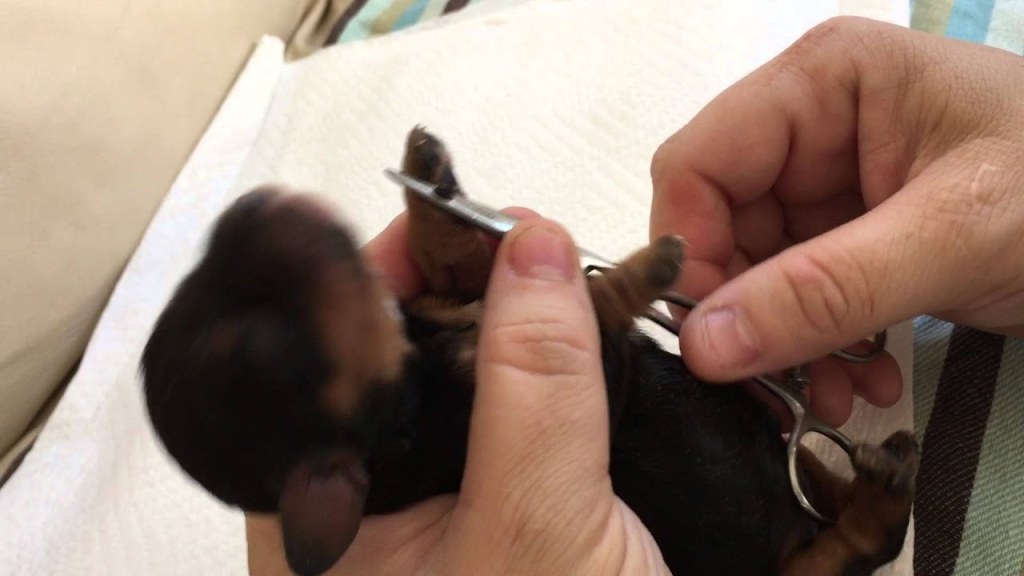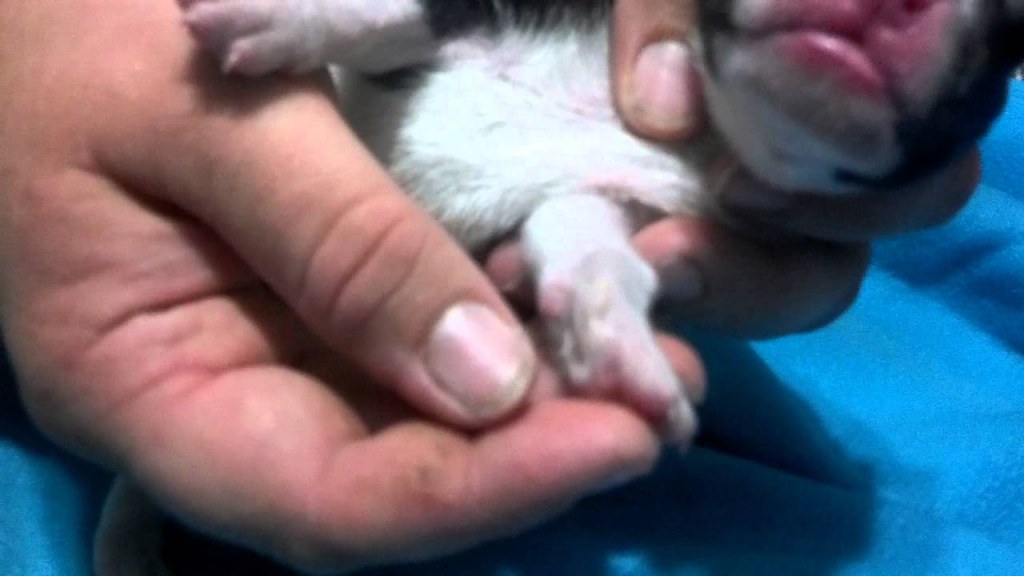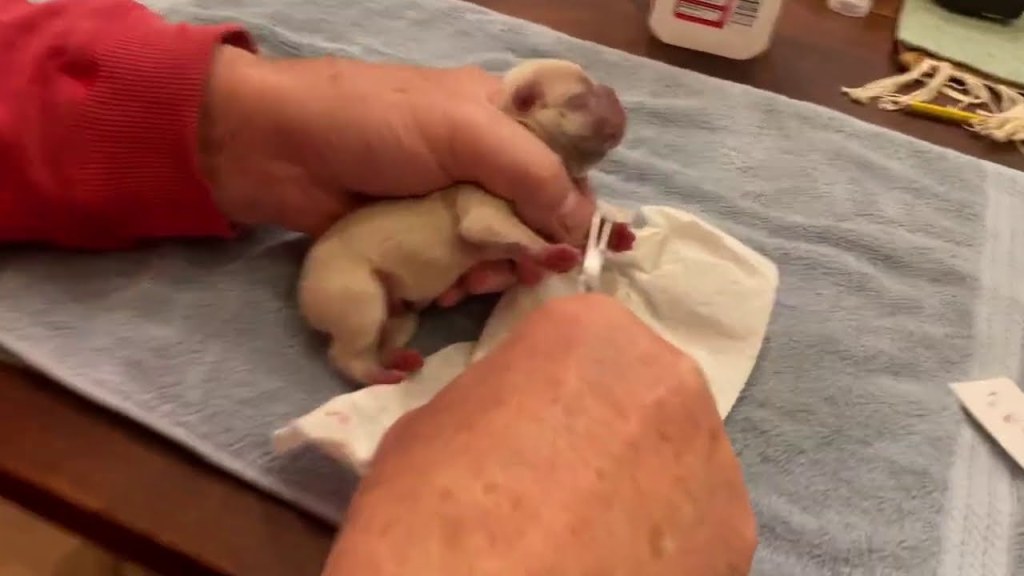Ultimate Guide: How To Safely Remove Dewclaws On Puppies! Click Now For Expert Tips!
How to Remove Dewclaws on Puppies
Introduction
Greetings, Puppies Lover! If you are a responsible dog owner, you want to ensure the health and well-being of your furry friend. One topic that often comes up in discussions about puppy care is whether or not to remove their dewclaws. In this article, we will explore the reasons behind dewclaw removal, the process involved, and the potential benefits and drawbacks. By the end, you will have a comprehensive understanding of how to make an informed decision regarding dewclaws for your puppies.
Dewclaws are the extra toes that appear higher up on a dog’s leg, similar to a thumb on humans. These digits are often seen on the inside of a dog’s front legs, and sometimes on their hind legs as well. While some dog breeds are born without dewclaws, others have them naturally. Dewclaws can vary in size, shape, and purpose, but they are not functional toes and can sometimes cause problems for dogs.
3 Picture Gallery: Ultimate Guide: How To Safely Remove Dewclaws On Puppies! Click Now For Expert Tips!



Now, let’s dive into the details of dewclaw removal and explore the various aspects surrounding this procedure.
What Are Dewclaws and Why Do They Exist?
🐾 The term dewclaw refers to the extra toe or digit on a dog’s leg that is positioned higher up. These digits are often seen on the inside of a dog’s front legs and occasionally on their hind legs as well. Dewclaws are remnants of what used to be functional toes in the evolutionary past of dogs.

Image Source: ytimg.com
🐾 Dewclaws do not have a clear purpose in modern dogs and are often considered vestigial. However, some argue that dewclaws provide additional gripping power and stability for certain dog breeds, especially those that are agile or used for specific tasks like climbing or gripping objects.
🐾 It is important to note that dewclaws can vary greatly in size, shape, and even the number of digits. Some dogs may have a single dewclaw on each front leg, while others may have double dewclaws, or even dewclaws on their hind legs. The number and position of dewclaws can differ depending on the breed.
Who Should Consider Dewclaw Removal?
🐾 The decision to remove dewclaws is ultimately up to the owner, in consultation with their veterinarian. There are a few situations when dewclaw removal may be considered:
🐾 Breed Standards: Some dog breeds have dewclaw removal as a standard practice. If you plan to show your dog or compete in certain events, it may be necessary to remove the dewclaws to meet the breed standards.

Image Source: ytimg.com
🐾 Preventing Injuries: Dogs with long or floppy dewclaws are prone to injury. If your dog is active and participates in activities such as running, jumping, or agility sports, their dewclaws may get caught on objects or torn, causing pain and potential infections. Dewclaw removal can help prevent such injuries.
🐾 Preventing Impaction: In some cases, dewclaws can grow excessively long and curl back into the dog’s paw, causing pain and discomfort. If your dog’s dewclaws are prone to impaction, removal may be necessary to alleviate their discomfort.
When Should Dewclaws Be Removed?
🐾 Dewclaw removal is typically done when the puppies are very young, often between 3 and 5 days old. At this stage, the dewclaws are not yet fully developed and the procedure is relatively simple.
🐾 It is important to consult with a veterinarian to determine the optimal timing for dewclaw removal. They will consider the health and size of the puppies, as well as any potential complications that may arise during the procedure.

Image Source: ytimg.com
🐾 It is generally recommended to have dewclaws removed early to minimize discomfort and ensure proper healing.
Where Can Dewclaws Be Removed?
🐾 Dewclaw removal should always be performed by a qualified veterinarian. The procedure can be done in a veterinary clinic or hospital, where the necessary equipment and sterile environment are available.
🐾 While some breeders or individuals may attempt to remove dewclaws themselves, it is not recommended. Improper technique or lack of sterile conditions can lead to infections, complications, and unnecessary pain for the puppies.
🐾 Always seek professional help to ensure the well-being of your puppies.
Why Remove Dewclaws?
🐾 There are several reasons why dewclaws are removed in certain situations:
🐾 Injury Prevention: Dewclaws that are long or floppy can get caught on objects or torn, causing pain and potential infections. By removing the dewclaws, you eliminate the risk of such injuries.
🐾 Breed Standards: Some dog breeds have dewclaw removal as part of their breed standards, especially in show dogs. If you plan to participate in dog shows or competitions, removing the dewclaws may be necessary to meet these standards.
🐾 Simplified Grooming: Dewclaws can accumulate dirt, debris, and fecal matter more easily than other toes. Removing the dewclaws can make grooming and cleaning your dog’s paws simpler and more hygienic.
How Are Dewclaws Removed?
🐾 Dewclaw removal is a relatively simple procedure that is performed by a veterinarian. Here are the general steps involved:
🐾 Anesthesia: The puppies are given a local anesthetic to minimize pain during the procedure. Veterinarians may use different anesthetic techniques depending on the age and size of the puppies.
🐾 Preparation: The veterinarian will clean the area around the dewclaws and disinfect it to reduce the risk of infection.
🐾 Removal: Using surgical tools, the veterinarian will carefully remove the dewclaws. The procedure involves cutting the skin and removing the entire dewclaw, including the bone and nail.
🐾 Closure: Once the dewclaws are removed, the veterinarian will close the wound using sutures or surgical glue.
🐾 Recovery: The puppies will need time to recover from the procedure. The veterinarian will provide instructions on post-operative care, including pain management and monitoring for any signs of infection.
Advantages and Disadvantages of Dewclaw Removal
Advantages:
1️⃣ Prevents injuries and potential infections caused by torn or caught dewclaws.
2️⃣ Reduces the risk of dewclaw impaction and associated discomfort.
3️⃣ May be necessary to meet breed standards for dog shows and competitions.
Disadvantages:
1️⃣ The procedure involves anesthesia and surgery, which carries inherent risks.
2️⃣ Removal of dewclaws can cause temporary discomfort and pain for the puppies.
3️⃣ Dewclaws serve a purpose in some dogs and removing them may reduce their abilities to grip or perform certain tasks.
FAQs
Q: Will removing dewclaws make my dog less agile?
A: While dewclaws may provide additional gripping power, their removal is unlikely to significantly impact a dog’s agility. Dogs are adaptable and can compensate for the absence of dewclaws.
Q: Can dewclaws grow back after removal?
A: No, once the dewclaws are surgically removed, they will not grow back. However, it is possible for a small amount of regrowth in some cases, which may need further attention.
Q: Is dewclaw removal painful for puppies?
A: The procedure is performed under anesthesia, ensuring that the puppies do not experience pain during the removal. Some discomfort may be present during the recovery period, but appropriate pain management can alleviate this.
Q: Are there any alternative methods to dewclaw removal?
A: If dewclaws are not causing any problems or risks, they can be left intact. Regular trimming and grooming can help maintain their length and prevent potential issues.
Q: Can I remove dewclaws myself?
A: It is not recommended to remove dewclaws yourself. Improper technique or lack of a sterile environment can lead to complications and infections. Seek professional veterinary help for dewclaw removal.
Conclusion
In conclusion, the decision to remove dewclaws on puppies is a personal one that should be made in consultation with a veterinarian. Consider the breed standards, potential risks and benefits, and the individual needs of your dog before making a decision. Remember to always prioritize the well-being and health of your furry friend.
By understanding the reasons behind dewclaw removal, the process involved, and the potential advantages and disadvantages, you are equipped to make an informed choice regarding your puppies’ dewclaws. Consult with your veterinarian for personalized advice and guidance tailored to your dog’s specific needs.
Remember, the ultimate goal is to ensure the comfort and happiness of your beloved furry companion.
Disclaimer: The information in this article is intended for informational purposes only and should not be taken as veterinary advice. Always consult with a qualified veterinarian for personalized guidance regarding your dog’s health and well-being.
This post topic: Puppies



